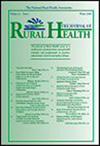Statewide implementation for medications for opioid use disorder (MOUD) in urban and rural emergency departments
Abstract
Background
Medications for opioid use disorder (MOUD) programs in Emergency Departments (EDs) are feasible and effective, but uptake lags despite rising overdose deaths. NM Bridge partners with hospitals across highly rural New Mexico to guide implementation for ED-based MOUD using a Dissemination & Implementation (D&I) approach. This manuscript describes NM Bridge's outcomes in its first three years (2020–2023).
Methods
NM Bridge offers partner hospitals a D&I intervention called implementation facilitation (IF) to guide their implementation of ED-based MOUD. The IF intervention has three mechanisms: (1) trainings, (2) a guiding blueprint (implementation plan), and (3) biweekly meetings. Each hospital receives tailored trainings, builds a team of champions who lead the work in the blueprint and are supported in biweekly meetings by the NM Bridge team. Successful implementation is defined as hospitals completing trainings, prescribing buprenorphine from the ED, and providing a warm hand-off to outpatient treatment. Primary outcomes include buprenorphine prescriptions written, clinicians trained, and peer support workers (PSW) hired.
Results
From 10/2020 to 12/2023, NM Bridge recruited 34 hospitals, engaged 12, with six fully participating. In engaged hospitals (8 rural, 4 urban), 100% recognized MOUD as a vital practice, but all reported barriers of locums staffing, <25% x-waivered clinicians, and stigma. The six participating hospitals (4 rural, 2 urban) achieved 100% of IF mechanisms, variable blueprint (implementation plan) achievement, and 100% successfully implemented MOUD. This resulted in a 52.3% increase in buprenorphine prescriptions [728 patients (592 rural, 136 urban)], 144 clinicians trained, and 50% of EDs hiring a PSW.
Conclusions
Implementation facilitation of ED-based MOUD programs was successful across six diverse hospitals, in a highly rural state.

 求助内容:
求助内容: 应助结果提醒方式:
应助结果提醒方式:


